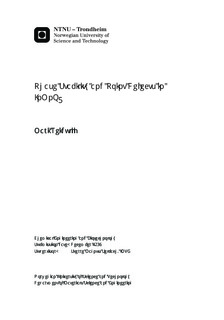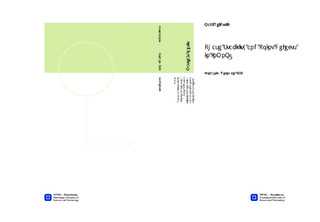| dc.description.abstract | During the last decade hexagonal manganites (h-RMNO3) have been a widely researched topic. This is mainly due to their multiferroic property that makes them a potential material for use in future electronics, data storage and sensors. The multiferroic property consists of the combination of ferroelectricity and magnetic order. In general, hexagonal manganites are assigned to the polar P63cm-space group and show ferroelectric behaviour at room temperature. However, recent experimental and computational studies on InMnO3 have shown deviating dielectric properties for this material. Both ferroelectric and paraelectric behaviour have been detected, which have raised questions regarding which space group is the most stable for InMnO3. The two proposed space groups in literature are ferroelectric, polar, P63cm and paraelectric, non-polar, P-3c1.\\
In this project the effect of point defects on the relative stability of P63cm and P-3c1 is investigated through a first-principles study using density functional theory. From previous work it has been shown that interstitial and vacant oxygen decrease the energy difference between P-3c1 and P63cm, hence disfavour the polar structure. In this project the ground-state energies for both space groups with In-vacancies are found, the phase transition between non-polar P-3c1 and polar P63cm are investigated and the effect of point defects of the polarization of P63cm is studied. With In-vacancies present in InMnO3 under oxidizing (ox.) conditions the non-polar P-3c1 phase has the lowest energy and is therefore the most stable. Stoichiometric InMnO3 is an insulator but has shown to turn metallic when In-vacancies under ox. conditions are present. This was found for both the polar and non-polar phase. In-O-vacancy pairs created in a reducing environment favoured the polar P63cm structure. Under these conditions the non-polar P-3c1 phase turned metallic, while the polar P-3c1 stayed insulating with some signs of shallow states in the band gap. The phase transition study revealed the presence of an activation energy barrier between stoichiometric P-3c1 and P63cm. This activation energy barrier increased with point defects of interstitial and vacant oxygen present, decreased for In-O-vacancy pairs and disappeared for In-vacancies at ox. condition. The polarization of P63cm increased with point defects of vacant oxygen and decreased substantially with In-vacancies present. The study has shown the great importance of point defects for the stability of the two phases in InMnO3, and has revealed a possible transition from insulator to metal with certain point defects present. | |

